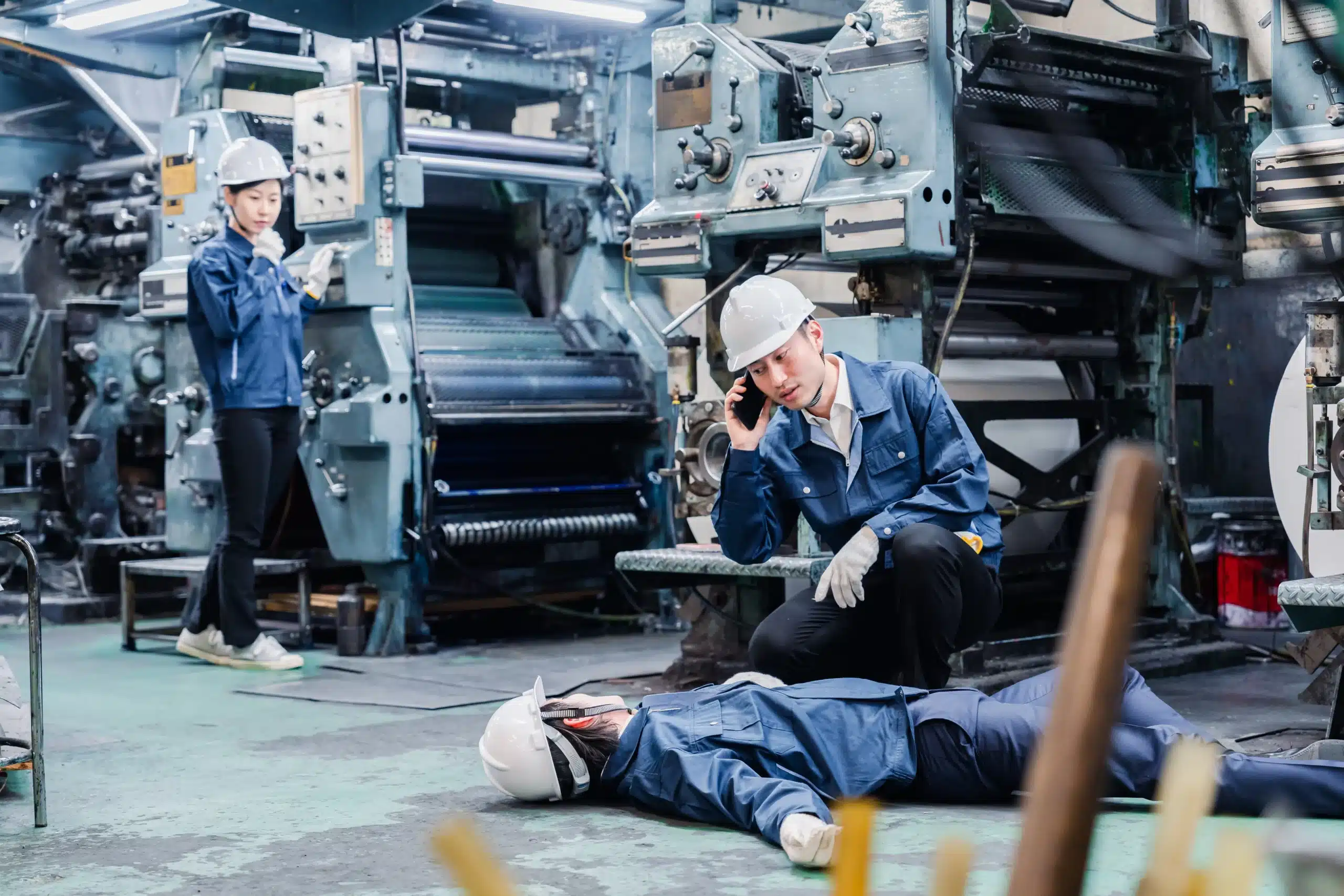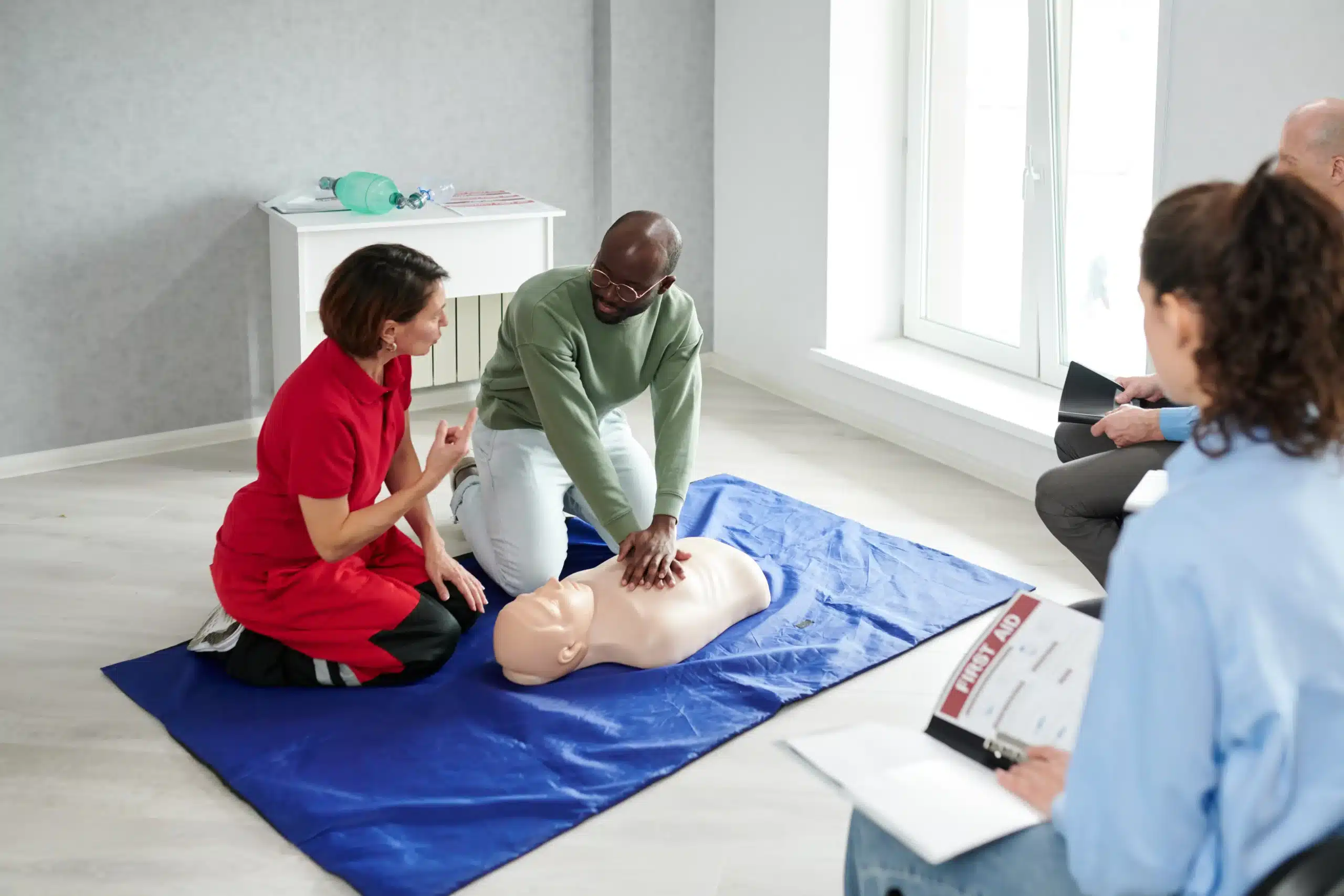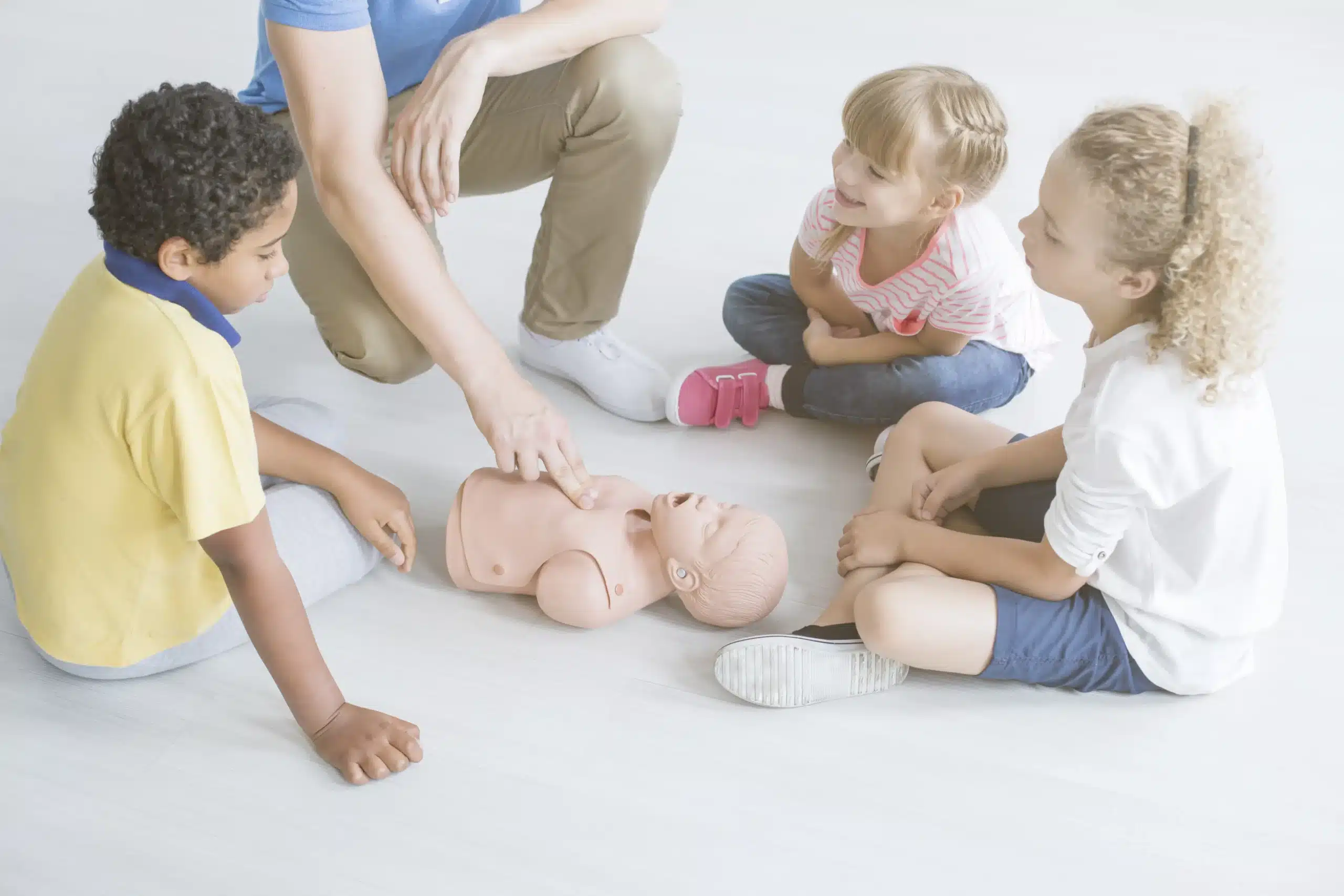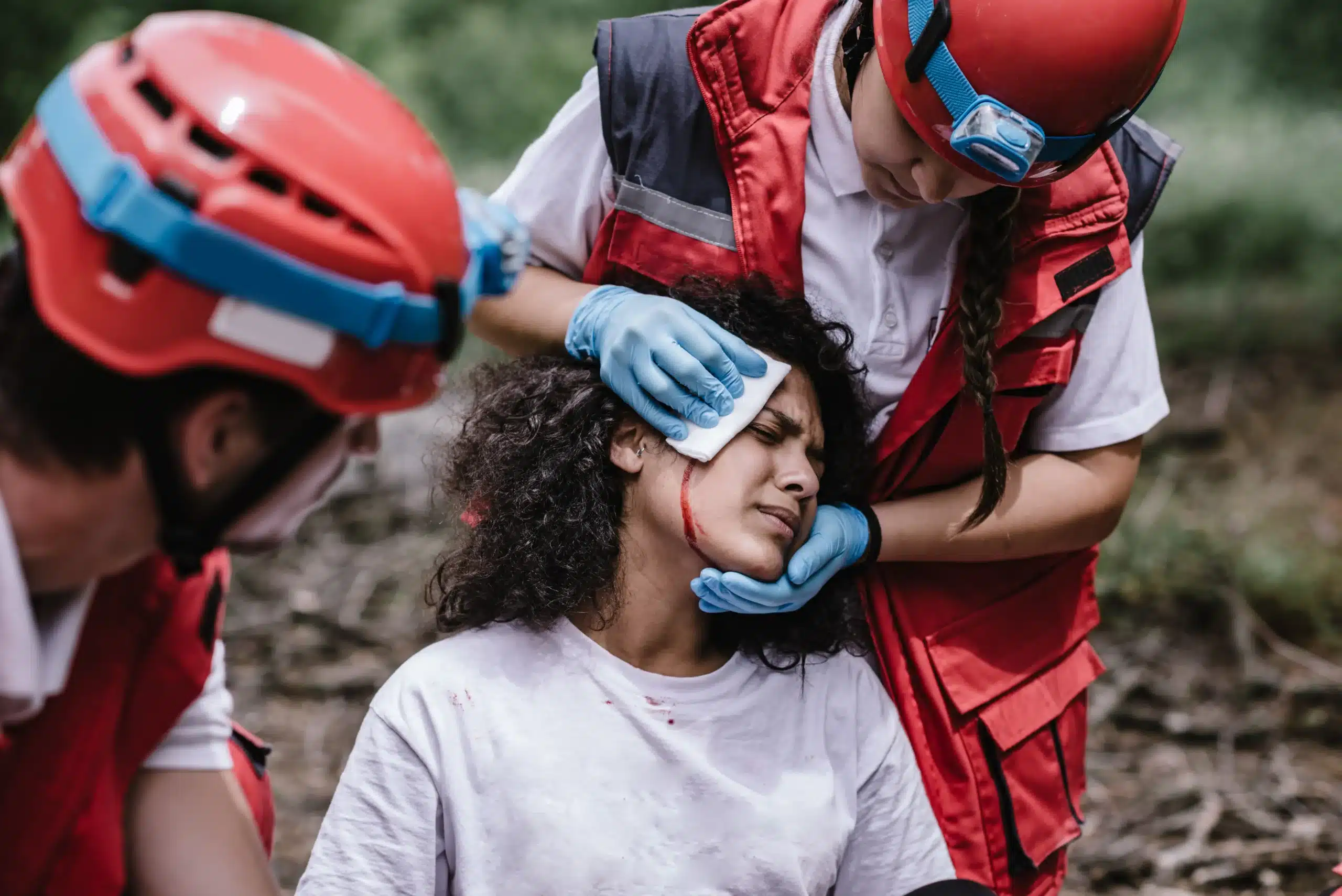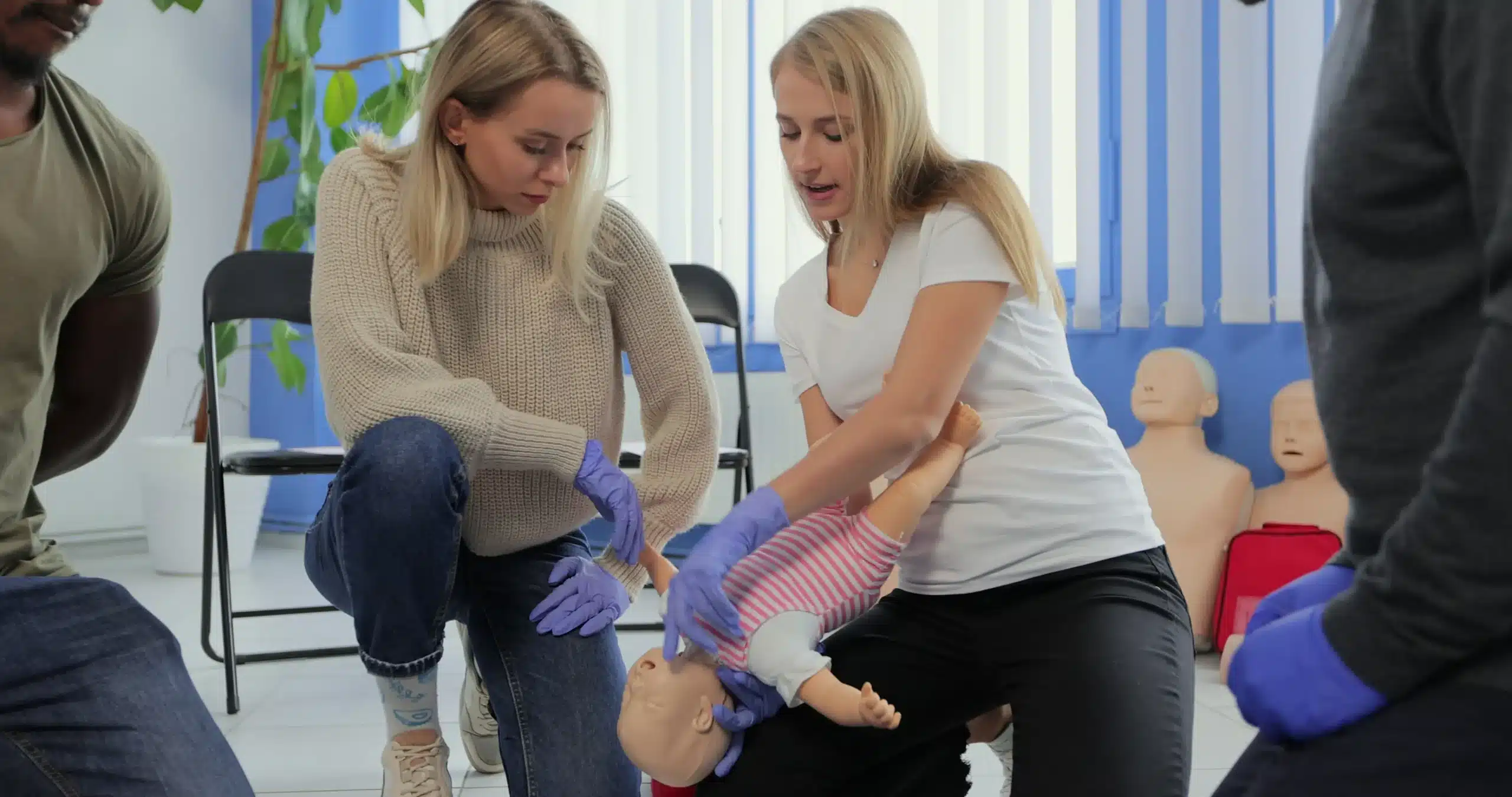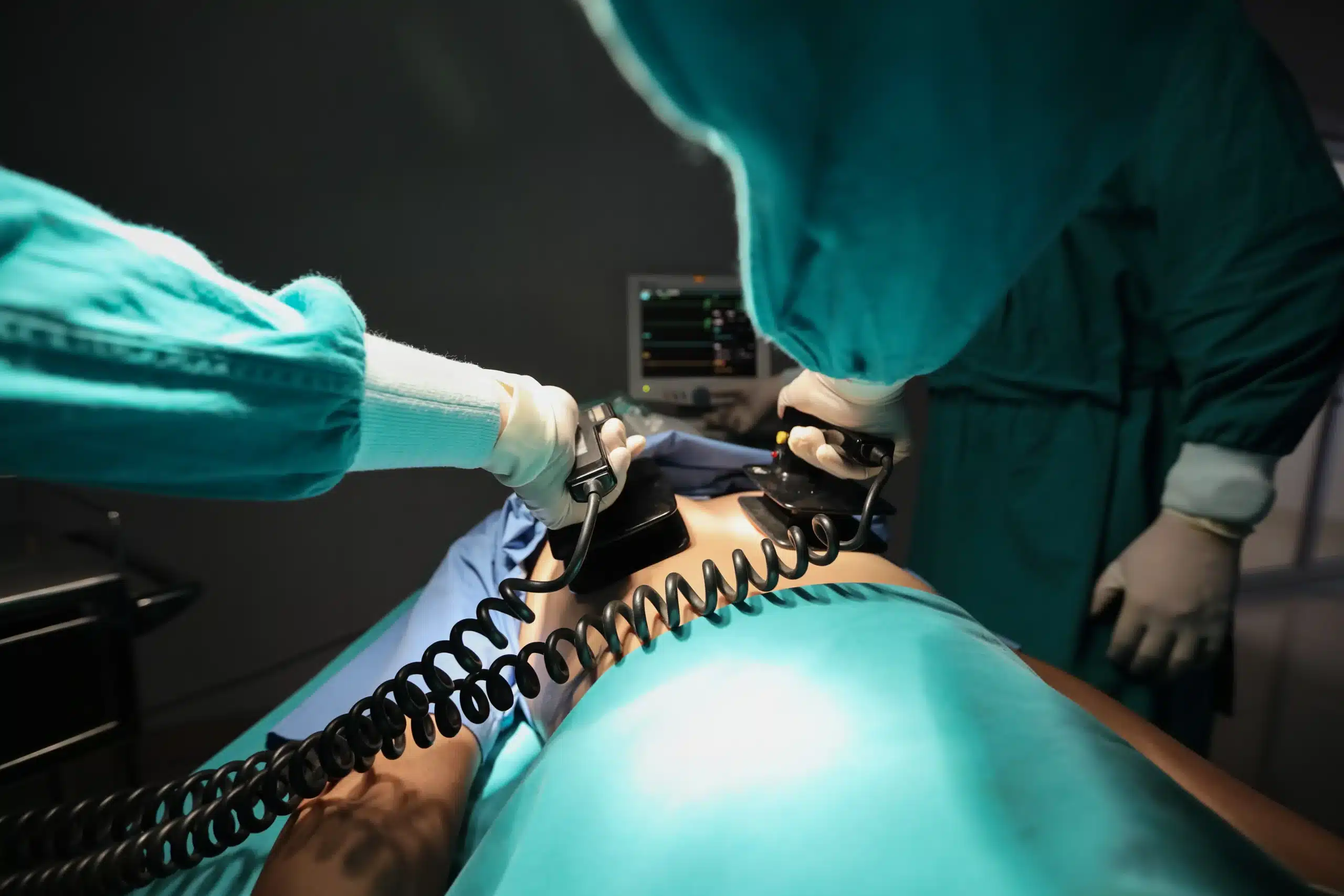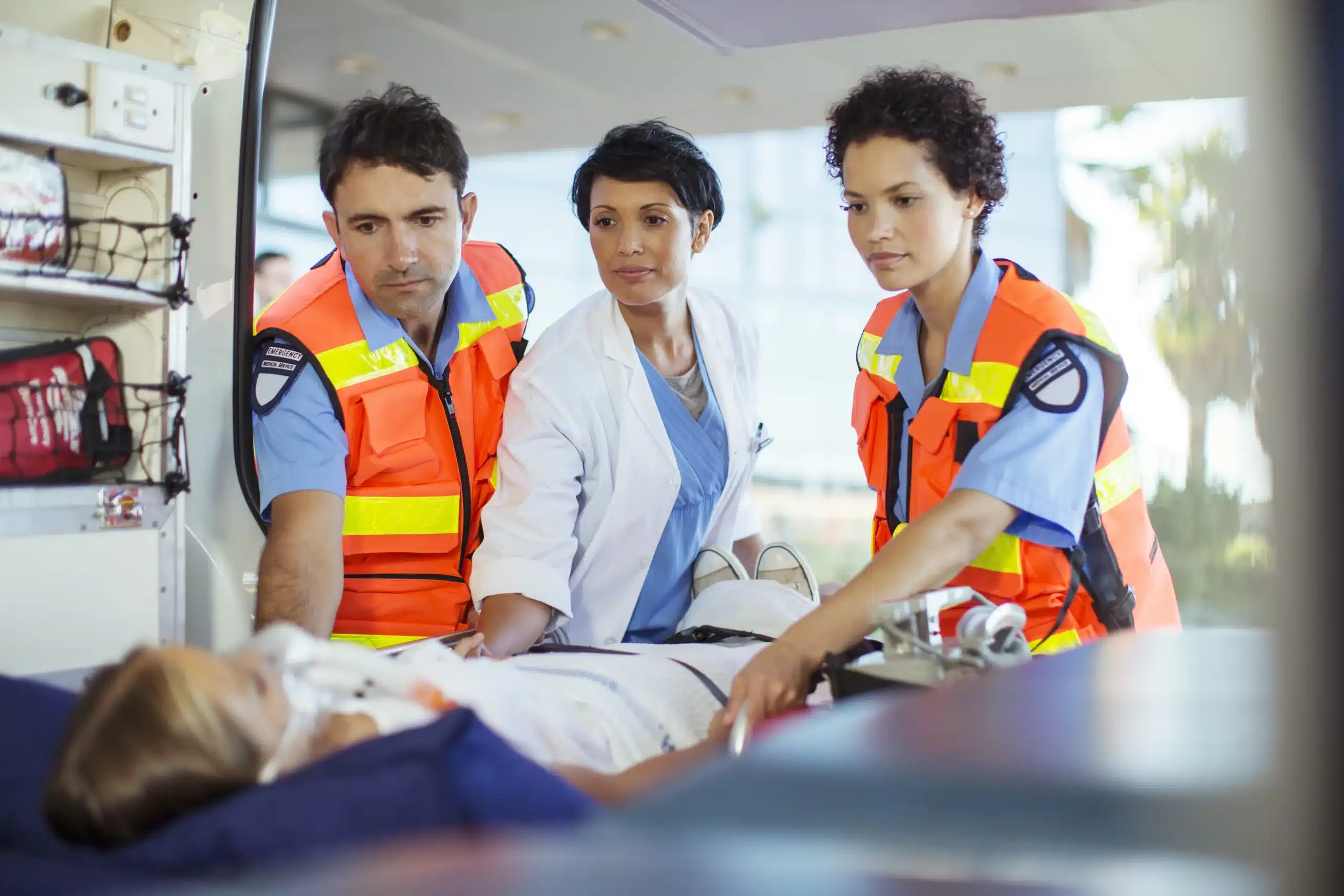Life can throw curveballs, and knowing how to respond in a medical emergency can make all the difference. If you’re in Mountain House and looking for a convenient and flexible way to learn these essential life-saving skills, online CPR classes in Mountain House might be the perfect fit. This approach combines the convenience of online learning with the crucial hands-on practice needed to confidently respond in a crisis. In this guide, we’ll explore the benefits of online CPR classes, different types available, how to choose the right one for you, and where to find reputable providers in Mountain House. We’ll also cover essential information about certification, accreditation, and how to maintain your skills so you’re always prepared.
Key Takeaways
- Online CPR classes fit easily into busy schedules, providing convenient and often affordable ways to learn life-saving skills. Supplement online learning with hands-on practice for the best results.
- Blended learning formats offer the flexibility of online study combined with essential in-person skills sessions. This approach provides a comprehensive learning experience and personalized feedback.
- Research providers, course content, and instructor qualifications to find the right online CPR class for your needs. Look for accredited providers and certifications that align with your goals, whether for personal knowledge or professional requirements.
What are Online CPR Classes in Mountain House?
Online CPR classes in Mountain House offer a convenient way to learn essential life-saving skills. These courses cover the same core content as traditional in-person classes, including adult, child, and infant CPR, how to use an AED, and what to do for choking victims. The key difference is the flexibility to learn at your own pace and fit the training around your busy schedule. Many online CPR classes, like those from providers such as Safety Training Seminars, use a combination of videos, interactive exercises, and downloadable resources. While the online portion covers the theoretical knowledge, most certifying organizations, including the American Heart Association, require an in-person skills check to receive your official certification card. This blended learning approach ensures you develop both the knowledge and the practical skills to confidently respond in an emergency. Providers like In-Home CPR offer this blended format, making it easy to complete the online portion and then schedule a short in-person skills session.
Types of Online CPR Classes
Finding the right CPR class often comes down to choosing the best format for your learning style and schedule. Let’s break down the main types of online CPR classes available.
Fully Online Courses
Fully online CPR courses offer maximum flexibility. You work through the material at your own pace, pausing, rewinding, and reviewing as needed. This format works well if you have a busy schedule or prefer self-directed learning. However, keep in mind that fully online courses typically don’t include a live, in-person skills check. This means they might not meet all workplace requirements, so double-check what your employer needs. For more information on online CPR and First Aid training, check out our CPR and First Aid Certification Courses.
Blended Learning
Blended learning combines the convenience of online learning with the essential hands-on practice of a traditional class. You’ll cover the theoretical material online, then attend an in-person skills session with a certified instructor. This approach gives you the best of both worlds: flexibility and the chance to demonstrate your skills and receive personalized feedback. If you learn best by doing, blended learning might be a good fit. For those interested in a blended learning approach, explore our available discount group classes.
American Heart Association Courses
The American Heart Association (AHA) offers a range of CPR and First Aid training options, including online, in-person, and blended learning formats. Their Basic Life Support (BLS) certification is a popular choice, covering essential skills like CPR, AED use, and how to clear someone’s airway. AHA certifications are widely accepted and respected, making them a solid choice for many healthcare professionals and other individuals needing CPR training. Safety Training Seminars in Livermore offers several AHA courses, including BLS, ACLS, PALS, and our innovative RQI program for quick certification. We also offer a low price guarantee, ensuring you receive high-quality training at a competitive price.
Benefits of Online CPR Classes
Online CPR classes offer several advantages, making them a popular choice for many seeking certification. Let’s explore some key benefits:
Flexibility and Convenience
Juggling work, family, and other commitments can make it tough to find time for extra training. Online CPR classes offer the flexibility to learn at your own pace and on your own schedule. This means you can study whenever and wherever it’s convenient for you—early mornings, late nights, or during your lunch break. This self-paced format empowers you to fit training seamlessly into your busy life. For those in Mountain House, online courses eliminate the need to commute to a specific training center, saving you valuable time and energy. Check out our guide to CPR courses in Mountain House for more information on local options.
Self-Paced Learning
Not everyone learns at the same speed, and that’s perfectly fine. With online CPR training, you’re in control. Take your time to absorb the material, review challenging concepts, and practice essential skills until you feel confident. The ability to revisit lessons as needed ensures you master the content before moving on. This personalized learning experience can lead to better retention and a deeper understanding of the material.
Cost-Effectiveness
Cost is often a major factor when choosing a CPR course. Online classes are frequently more budget-friendly than traditional in-person training. This can be especially helpful if you’re covering the training costs yourself. CPR Select offers an example of affordable online certification, making this valuable training accessible to a wider audience. Be sure to compare pricing and explore any available discounts when selecting a provider. Our low price guarantee ensures you’re getting the best value for your investment.
Accessibility for Remote Learners
For those in areas with limited access to in-person training centers, online CPR classes are a game-changer. Individuals in communities like Mountain House can conveniently access and renew certifications from home, eliminating the need for extensive travel. Providers like Safety Training Seminars and In-Home CPR offer accessible online options, ensuring that essential training reaches everyone, regardless of location.
Compare Costs and Providers in Mountain House
Finding the right CPR certification course often involves balancing quality with cost. This section helps you understand pricing factors, explore potential discounts, and compare various online CPR class providers serving Mountain House.
Pricing Factors
CPR certification costs depend on several factors, including the course type (BLS, ACLS, PALS, etc.), the training format (online, blended, or in-person), and the provider. Individual BLS courses typically cost around $80, but this can fluctuate. It’s wise to check with specific providers like Safety Training Seminars for their current pricing. Remember that the value of certification lies in the skills you gain, so consider the comprehensiveness of the course content alongside the price. A slightly higher cost might offer more in-depth training or additional resources.
Discounts and Promotions
Before committing to a course, explore potential discounts. Many providers offer promotions for group bookings, students, or returning customers. Some, like CPR Care, provide free course materials and certification card discounts for groups of five or more. It’s always a good idea to inquire directly with the provider about any ongoing discounts. Finding a deal can make quality training even more accessible.
Top Online CPR Class Providers
Several reputable organizations offer online CPR certification courses accessible to residents of Mountain House. Here are a few options to consider:
Safety Training Seminars
Safety Training Seminars offers a range of American Heart Association courses, including CPR, First Aid, BLS, ACLS, and PALS. They are known for their competitive pricing and excellent customer service. Explore their website for more information on their CPR and First Aid certification courses.
American Red Cross
The American Red Cross is a well-established provider of CPR and first aid training. They offer various learning formats, including online, blended learning, and instructor-led classes. You can explore their website for more information on their CPR class options.
In-Home CPR
If you prefer a more personalized approach, In-Home CPR brings the training directly to you in Mountain House. This convenient option allows you to learn essential lifesaving skills in the comfort of your home.
CPR Care
CPR Care provides online CPR certification, AED training, and Standard First Aid courses. They cater to both lay responders and healthcare providers.
American BLS
American BLS offers online courses in CPR, AED, First Aid, and Bloodborne Pathogens. This can be a convenient option for those seeking a fully online certification experience.
Life Saving Training Institute
Life Saving Training Institute provides accessible and affordable online CPR and First Aid certification courses.
ValueCPR
ValueCPR offers online CPR and First Aid certification, often with discounts available to reduce the cost.
Certification and Accreditation
Earning your CPR certification is a rewarding accomplishment. Understanding certification validity, accreditation, and verification ensures your qualification is legitimate and accepted by employers and organizations.
Certification Validity
CPR certifications, like those for CPR and first-aid, are typically valid for two years. This timeframe reflects the evolving nature of best practices in emergency care. Renewal is required to stay up-to-date and maintain your skills. Continuing education courses are available to help you refresh your knowledge and techniques. Check with your certifying organization for specific renewal requirements and available courses. Our RQI program is one way to quickly recertify.
Recognized Accrediting Bodies
Several respected organizations offer accredited CPR certification. The American Heart Association provides a range of courses, including online options for busy professionals. The American Red Cross is another widely recognized provider of CPR classes designed to equip individuals with the skills and confidence to handle emergency situations. When choosing a course, ensure the provider is a reputable and accredited organization. We offer a low price guarantee on all our CPR courses, including those from the American Heart Association. See our low price guarantee page for more information.
Verify Certification Legitimacy
CPR certifications are often issued digitally. These certificates are easily accessible, printable, and shareable online. They typically include a unique ID and QR code, making it simple for employers to verify your certification. Some providers offer platforms for employers to track student progress and purchase additional courses. This streamlined process benefits both individuals and organizations seeking reliable and verifiable CPR training. Group discounts are also available for businesses looking to certify multiple employees.
Choose the Right Online CPR Class
Finding the right online CPR class requires a little research to ensure it fits your needs and learning style. Here’s what to consider:
Assess Your Needs
Before browsing online CPR courses, think about your specific requirements. Why are you taking this class? Is it for a job, personal knowledge, or a specific situation? Understanding your motivation helps you choose the right certification level. As discussed in our CPR Courses in Mountain House guide, CPR training options range from basic community courses to professional certifications. Consider your schedule and how much time you can dedicate to training.
Evaluate Course Content
Once you know your needs, evaluate the content of different online CPR classes. Does the course cover adult, child, and infant CPR? Does it include AED training? BLS certification offers a comprehensive course covering essential life-saving skills like CPR, AED use, and airway clearing. Consider the format, too. Some courses rely on video instruction, while others use interactive exercises or downloadable resources. The American Red Cross offers various learning formats, including online, in-person, and blended learning. Choose a format that suits your learning style.
Check Instructor Qualifications
Course content is crucial, but so are the instructor’s qualifications. Look for online CPR classes taught by certified instructors with relevant experience. For example, In-Home CPR instructors are EMTs, RNs, or Paramedics. This ensures you learn from qualified professionals who provide accurate and up-to-date information. If the instructor’s credentials aren’t readily available, contact the course provider and ask.
Read Reviews and Testimonials
Finally, read reviews and testimonials from past students. Websites like American CPR Care Association and American CPR often feature student feedback, offering insights into the course quality and the instructor’s teaching style. These firsthand accounts can give you a better sense of what to expect. Look for comments about the clarity of instruction, helpfulness of materials, and the overall learning experience.
Technology Requirements and Practical Considerations
Before you sign up for an online CPR class, it’s helpful to understand the tech requirements and how to create a productive learning space. A little preparation goes a long way!
Essential Equipment and Software
Online CPR classes offer flexibility, letting you learn at your own speed. To get started, you’ll need a computer or tablet with reliable internet access. This simple setup is all you need to access the course materials, videos, and quizzes. The American Red Cross highlights the self-paced nature of online learning, allowing you to progress through the material comfortably.
Create a Suitable Learning Environment
Just as important as the right technology is having a quiet space where you can focus. Learning CPR is a serious undertaking—it can significantly impact someone’s chances of survival during a cardiac arrest. Find a spot free from distractions where you can concentrate on the training materials and absorb the information effectively. This focused approach will help you retain the lifesaving skills you’re learning. This article on free online CPR training emphasizes how crucial focus is for retaining these vital skills.
Options for Hands-On Practice
While the online portion provides foundational knowledge, hands-on practice is essential for mastering CPR. Many online CPR class providers offer blended learning, combining online instruction with in-person skills sessions. This approach lets you learn the theory online and then practice with a certified instructor. The American Red Cross also discusses this blended learning model. For residents in Mountain House seeking BLS certification, this guide offers valuable insights into the importance of hands-on training, especially for recertification.
Make the Most of Your Online CPR Training
Online CPR training offers flexibility, but maximizing its value requires a proactive approach. Here’s how to make the most of your online CPR course:
Effective Study Strategies
Online CPR classes are typically self-paced, allowing you to learn at your own speed. You’ll move through modules and complete learning assessments—usually needing 80% or higher to pass. Keep in mind that online courses don’t offer hands-on skill demonstrations with an instructor, so they might not meet all workplace requirements. Consider supplementing your online training with in-person practice or resources like videos and quick reference guides. Combining online learning with practical application can significantly improve your understanding and retention.
Maintain Skills Post-Certification
CPR skills can fade over time, so staying sharp is crucial. Regularly review the material and refresh your knowledge with short quizzes or practice scenarios. The RQI program, with its emphasis on quarterly refresher sessions, is a great option for combating skill decay, a common challenge with traditional CPR training. Hands-on practice is essential for mastering CPR techniques. Look for opportunities to practice with friends, family, or colleagues.
Continuing Education Opportunities
Even after certification, continuing education is key to staying up-to-date with the latest guidelines and best practices. Explore advanced certifications like ACLS or PALS. Many providers, including Safety Training Seminars and In-Home CPR, offer renewal courses to help you maintain your credentials. Maintaining your BLS certification demonstrates your commitment to providing high-quality care and ensures you’re prepared to respond effectively in emergencies. Stay informed about new developments in CPR techniques and guidelines to provide the best possible care.
Related Articles
- CPR Courses in Mountain House: Your Certification Guide – Livermore CPR Classes
- Online CPR Classes in Livermore: Your Guide – Livermore CPR Classes
- CPR Certification in Dublin: Your Guide – Livermore CPR Classes
- ACLS Courses in Mountain House: Your Complete Guide – Livermore CPR Classes
- Why CPR is Essential in Healthcare (and How to Get Certified)
Frequently Asked Questions
What’s the difference between fully online CPR and blended learning CPR? Fully online CPR courses offer ultimate flexibility—you learn at your own pace from anywhere with an internet connection. However, they often lack the in-person skills assessment required for some workplaces and certifications. Blended learning combines online coursework with a hands-on skills session led by a certified instructor, giving you both convenience and practical experience. This approach often meets workplace requirements and allows for personalized feedback.
Are online CPR certifications accepted everywhere? Acceptance of online CPR certifications varies. While convenient, fully online courses might not meet all requirements due to the absence of a live skills check. Blended learning certifications, which include an in-person skills assessment, are generally more widely accepted. It’s always best to check with your employer or organization to confirm their specific requirements.
How much do online CPR classes typically cost? The cost of online CPR classes depends on factors like the course type (CPR, BLS, ACLS, etc.), format (fully online or blended), and the provider. Fully online courses are often more budget-friendly, while blended learning courses, which include in-person training, might be slightly more expensive. Look for providers offering discounts for groups, students, or returning customers. Always compare pricing and course content to find the best value.
How can I make the most of my online CPR training? To maximize your online CPR training, create a dedicated learning space free from distractions. Actively engage with the material, take notes, and utilize any interactive exercises or practice scenarios provided. If your course doesn’t include an in-person component, consider supplementing your learning with videos or quick reference guides demonstrating proper techniques. Regularly review the material after completing the course to keep your skills fresh.
How often do I need to renew my CPR certification? CPR certifications are typically valid for two years. Renewal is essential to stay current with the latest guidelines and maintain your skills. Many providers offer refresher courses or streamlined renewal options like the RQI program. Check with your certifying organization for specific renewal requirements and available courses.
